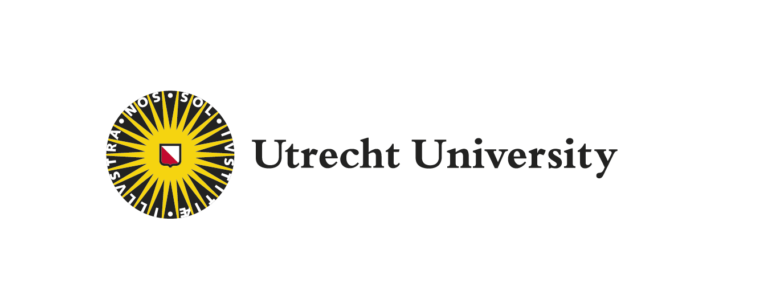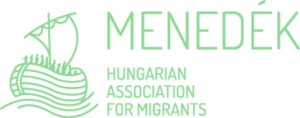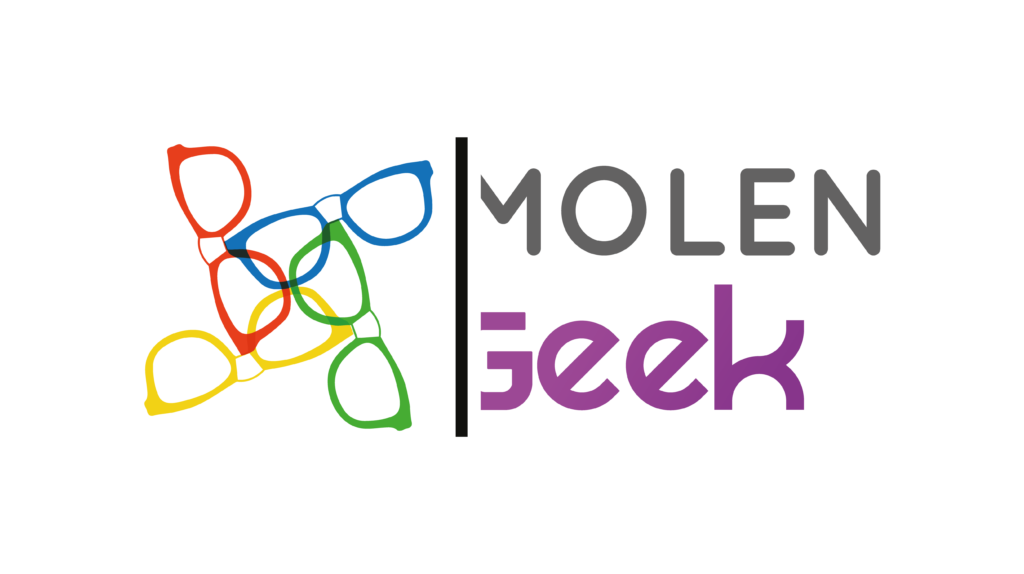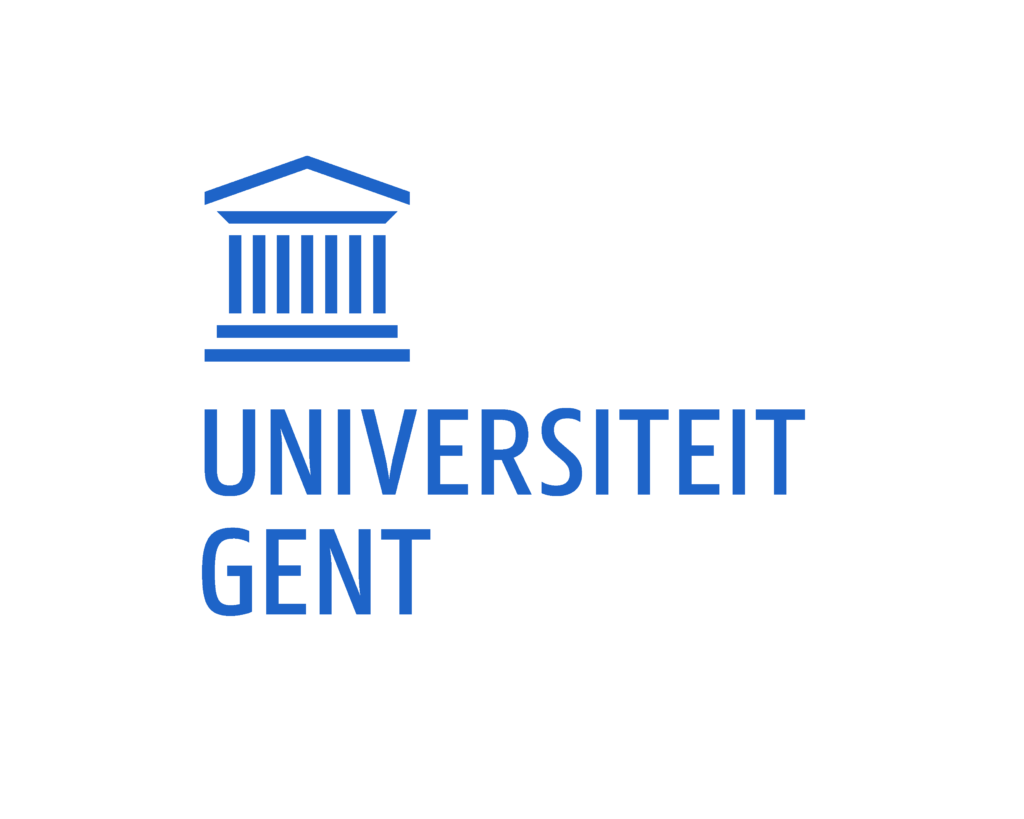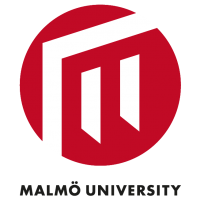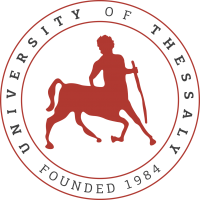PILOT SITES
Brussels/Amsterdam/North-Sea Coast
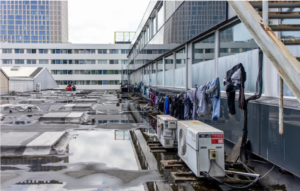
This field site is situated in Belgium, the Netherlands, as well as on the North Sea coast. It is constituted of multiple co-constructed and interrelated environments, ranging from online networks and platforms to private homes, squats, camps in rural and urban areas, churches, organized shelters, parks and the streets. These places have various degrees of accessibility, account for different temporalities and are subject to changeability and ruination. This complex topography, durability and directionality and the precarious mobile dwelling and navigating that happens within, engendered various ‘mobile commons’ of care. These, together with small-scale civic organizations as well as infrastructuring practices of volunteers, activists and, most importantly, the im/e/migrating people, co-constitute the site.
Karditsa/Katerini
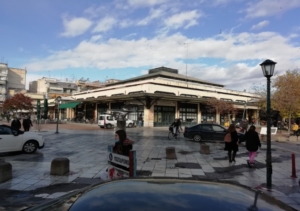
The research site comprises of two typical small-sized, disempowered cities (Karditsa – Katerini), located in Central Greece, which exhibit similar characteristics in terms of demographics, economy and migrant influx. The arrival situation concerns the implementation of the ESTIA programme in the two cities, providing accommodation to a substantial number of newcomers (asylum seekers) that have entered the country during the 2015-2016 refugee crisis. Newcomers, local authorities, implementing actors, grassroots movements, NGOs and past immigrants form the respective assemblage. Yet, despite the similarities of the two cities, local responses to immigration and to formation of arrival infrastructures have been quite different.
In an attempt to deal with the pressing issue of accommodating the newcomers, UNHCR in collaboration with the Greek Government and NGOs, introduced the ESTIA programme, which was applied in selected cities. To fulfil its objectives, the programme drawn on local actors setting up local structures of implementation. These structures were neither fixed nor identical in each city and reflected the local conditions, capacities, politics and dynamics and as well as the existing infrastructuring practices (formal and informal). These structures constituted the focal-point of arrival situations, determining newcomers’ mobility and integration, and indeed providing the groundwork for ‘becoming otherwise’.
In order to deal with the complexity and multi-dimensionality of the subject matter, the research employed a range of methods. Institutional mapping during the first steps helped to delineate the relevant actors and the basic structure of each arrival situation. The entry points were unveiled which then were investigated using a variety of ethnographic methods such as participant observation, diary and field notes, semi-structured interviews. In order to gain the trust of newcomers, the researchers have been also involved in volunteering work, participation in social events and even active job search collaboration and assistance.
Although tight mobility and policing policies at national level constitute the main instruments of a rather highly governmentalized approach to migration, other “infrastructures” (related to the provision e.g. of housing, food, and education) are also in play. The fieldwork highlights how the local context, the mentality of involved agencies and the responses of “street level bureaucrats”, operating within the same national policy framework, shape each local arrival situation and define migrant mobility and trajectory. The research reveals the importance of a different narrative and an integration approach that is context specific, putting in forth needs in the labour market that are common to both locals and newcomers.
Prof. Paschalis Arvanitidis, George Papagiannitsis, Penelope Vergou, Aimilia (Emily) Voulvouli, Athina Zoe Desli
Haspengouw/Westland

This site revolves around the mobile lifeworlds of agricultural migrant workers in the municipality of Westland (NL) and the region of Haspengouw (BE). In Haspengouw, known for its fruit horticulture, and Westland, known for its greenhouse agriculture, many Central and Eastern European (CEE) migrant workers are employed in the plantations and greenhouses through temporary contracts. Research in this site focuses on the ways migrant workers find their way upon arrival in these agricultural areas through work, housing, shops, services, digital spaces and informal networks, all within a context where there is a constant need for flexible, dismissible labour. In this context, migrant workers are often seen and treated as either temporary or seasonal newcomers, or as (potential) victims of exploitation.
The relation between agriculture and migration in Westland and Haspengouw precedes the expansion of the European Union in 2004 and 2007. Turkish and Moroccan guestworkers already present in the Netherlands and Belgium and Sikh refugees coming to Belgium found often informal employment which alleviated a demand for cheap and flexible labour. Together with national legislations allowing more flexible and temporary labour, expansion of the EU made it possible for growers to employ citizens from mainly CEE countries. From these emerging mobilities, (in)formal transnational migration industries have developed in which employment agencies, farmers and brokers became important and profiting actors in channelling agricultural migrant workers into temporary work and housing.
Ethnographic entry points have been different plantations, greenhouses and factories in Westland and Haspengouw, in order to better understand the ways agricultural labour and migration regimes work out in the repetitive physical labour on the fields and in social interactions between migrant workers and employers. From here the research followed different people, trajectories, communities and infrastructures that are involved in the arrival situation and (temporary) settlement of migrant workers. Spatially, this also meant following people from agricultural workplaces to urban areas like The Hague and Brussels where many migrant workers live and organize themselves.
From this ethnographic research, it became clear that even though these specific kinds of newcomers fulfil a structural role in the national and regional economy, the assumed and regimented temporariness inherent to the way agricultural migrant work is organized and controlled by different actors diffuses and obstructs structural provision and access to resources and rights, enhanced by restrictive normative ideas around (local) ‘integration’. However, trajectories and aspirations of migrant workers are more diverse than assumed and do not only include subjective experiences of exploitation. Even though plans might be short-term, temporary or open-ended at the beginning, migrant workers delay their return, start families, get unintentionally entrapped, and develop aspirations for their futures in the Netherlands, Belgium or someplace else, putting pressure on the whole system of agriculture and labour migration. The next phase of research will focus on arrival infrastructures and practices based on this sustainability and hence structural provision and access to resources, information and solidarity, beyond labour and regardless of the people’s temporary, longer-term or seasonal presence as newcomers.
See the results of the collaborative exhibition focusing on “new rituals” among agricultural migrant labourers in the Netherlands and Belgium: https://pickingfruitsowingstories.com
Thessaloniki
Thessaloniki is an important hub in the movement of migrants from Turkey to the Balkans. The research focuses on two specific areas that concern homeless people on the move. The first is located at the western entrance of the city, in the area of abandoned train wagons which are occasionally used by undocumented people on the move. The second is located in the Ano Poli – Upper Town, which is surrounded by medieval walls next to which abandoned wall houses have been occupied by newly arrived migrants.
Αpart from registered refugees and asylum seekers, an increasing number of newcomers merely pass through Thessaloniki or stay for short periods of time. People on the move are mainly undocumented newcomers, who try to cross Greece and the rest of the Balkan countries, being careful not to be detected by the authorities, so that they can then apply for asylum directly in a Central or Northern European country of their destination. In the struggle of people on the move to remain invisible and not be recorded by the authorities, alternative infrastructures such as the abandoned train wagons area and the wall houses play a decisive role.
The research explores the abandoned train wagons and the wall houses because they constitute pretty unique cases where newcomers find shelter and their mobility paths are substantially informed. The first case is located at the western entrance of the city and concerns the areas of abandoned train wagons which are occasionally used by undocumented people on the move as places to stay, recover and organise their next steps. The second one is located in the old town called Ano Poli – Upper Town which is surrounded by medieval walls next to which refugees of 1922 from Minor Asia had built makeshift shelters. Although many of these have been demolished there are several which remain standing but unoccupied. It is in these abandoned shells that many newly arrived migrants have found refuge.
Abandonment: A growing number of newcomers are excluded from the European asylum system, they become irregularized and they are abandoned without having access to public services. However, in terms of infrastructures, the condition of abandonment opens the possibility to reuse abandoned infrastructures (like train wagons and wall-houses) for the benefit of the newcomers.
Practices of commoning: The sustainability and transformation of the abandoned infrastructures into arrival infrastructures take place through commoning practices, which are based on multiple circuits of contact between newcomers and locals, allowing the former to invent spaces of hope, imagination, co-habitation, friendship and solidarity.
Arrival infrastructures as threshold spaces: If state-run camps are enclave-like places of fencing and excluding migrants from the right to the city, then the newcomers’ arrival commons explore the possibilities for opening up the city to the newcomer. Thus, it could be argued that the examined spaces constitute threshold passages for the newcomers to the city or to their next destinations.
Paris
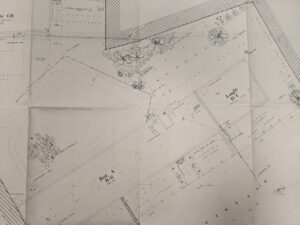
West African migrants in France have developed established arrival infrastructures, notably in the migrant hostels – or foyers – organized by the French state which turned into migration infrastructures by generations of migrants. East African migrants have a much less established migration history and combine distinct patterns of arrival. The Paris research site focuses on dynamics around housing and livelihoods, in and beyond the foyers. Through this lens, site researchers delineate the temporal, spatial, material, and social differences and convergences in the processes of arrival, transit, and settlement of (mainly) African migrants from distinct countries.
Aïssatou Mbodj, Laura Guérin, Stefan Le Courant, Lucie Reville
Nordstadt

Nordstadt is a dense urban neighbourhood located in the centre of Dortmund in Germany. It was established as a working class neighbourhood in the 19th century and has been further shaped by a multitude of forms of ‘bottom-up’ and ‘top-down’ arrival infrastructuring. The site research investigates the tension between institutionalization through time and transformative change through the arrival of newcomers.
Barking and Dagenham
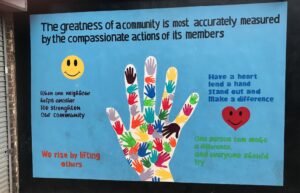
The London Borough of Barking & Dagenham is a deprived borough that has experienced swift demographic change. The council seeks to ensure socio-economic inclusion for longer established residents, while also meeting the needs of a changing population. It is a task complicated by the political history of the area, funding restrictions, the UK’s dysfunctional housing market, and the effects of the national government’s hostile policies on migrant residents.
Barking & Dagenham has a strong social integration policy that recognises that both international migrants and established residents may suffer exclusion in a context of deprivation. Central government cuts to local authority budgets have narrowed the space for councils to provide support beyond the minimum that the they are legally obliged to offer. Wider dynamics of social exclusion, social housing supply and housing affordability in the city bring vulnerable arrivals, both British and foreign born, to seek shelter and support services in the borough. Finally, many residents have experienced destitution or prolonged social exclusion due to national-level policies and practices towards migrants.
The ethnographic research unfolded in everyday spaces (libraries, market, cafés and shops, homes) and in services targeting specific needs, social identities or neighbourhoods. These included free food provision services, English teaching services, and services for particular cultural, linguistic or faith groups. Despite the lack of visible, targeted services for international migrants or other newly arrived residents, there was evidence that the council, charities and community groups were delivering a range of different and often changing services, often to different types of arrivals. Weekly volunteering at a free lunch service for the homeless revealed that arrival was not only from other countries but also from other London boroughs, other parts of the UK, and sometimes from institutions such as prisons.
Findings reflect challenges for the inclusion of new arrivals in the borough, who often lack the technology, language and digital skills, know-how and/or social connections needed to discover and access opportunities and services. Help and information from friends, family, landlords, and colleagues could unlock opportunities and help overcome barriers, but many participants were isolated, or had social networks that did not help them overcome any language, skills and know-how barriers. Signposting was of little use to those facing severe barriers of language, digital skills or know-how. For some, contacts within a particular service were their only opportunity to access support or information, yet those services were not always designed, resourced or equipped to provide it effectively and with compassion.
Istanbul-Fatih
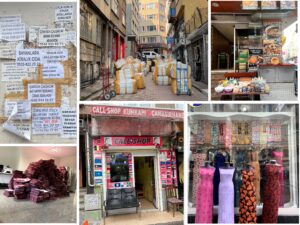
The localities of Aksaray, Laleli and Kumkapi, located in the historical district of Fatih in Istanbul, form a transnational migration hub that connects the Middle East, Central Asia, Eastern Europe, North Africa and South/Southeast Asia. Foreign nationals with various legal statuses, migration motives and opportunities have been arriving into the already existing local context of diversity. The localities comprise of a wide range of small and big, formal and informal businesses such as shops, call centers, cargo agencies, hotels, barbers, estate agencies and ethnic restaurants that serve as an arrival infrastructure for newcomers. While Aksaray and Laleli have been known for their vibrant commercial wholesale trade scenery, Kumkapi has mostly remained a residential area, providing housing infrastructure for long-term inhabitants, passers-by, and newcomers.
As part of the Re-Root project, ethnographic research was conducted in Aksaray, Laleli and Kumkapi in commercial spaces like shops, real estate agencies, cargos and in a private clinic that is one of the very few institutionalized spaces providing services to migrants. Participant observation included spending many hours in different days and times of the week in the previously mentioned spaces and chatting/hanging out with shopkeepers, waiters, carriers, real estate agents, café managers, patients and medical staff of the clinic, all of which provided insights into the multilayered arrival situation in the area where the boundaries of formality and informality are blurred.
One of the important findings of the project is around the gendered nature of arrival infrastructures. Women suitcase traders arriving into the area in the 1990s continue to play a significant role in organizing work relations and social life along lines of gender and intimacy. The loosely regulated mobility of suitcase traders facilitated the mass arrival and further (labor) migration from former Soviet Union countries. In other words, women suitcase traders have been the primary mediators of post-1990s arrivals in these localities. While arrival of women suitcase traders is supported by presence of different infrastructures in the area it is also discouraged by simultaneous development of migrant sex work in these localities that have reinforced a public notoriety of the area as a place of prostitution. Such a notoriety makes movement through public space, finding employment and housing particularly difficult and sensitive for especially (young) women newcomers. Women who particularly are marked as ‘foreign’ in this space shared experiences of verbal and/or physical sexual harassment and violence.
To address this and foster a safe space for community-building, as part of the Re-Root project we started a series of WenDo self-defense workshops for local and migrant women. These participatory, technique oriented, skill-sharing workshops aim to not only teach basic principles of self-defense but also connect women over their shared experience of gender-based violence.
Budapest
 The research site Budapest takes Semmelweis University, ELTE and the University of Miskolc as starting points to investigate the arrival infrastructure for international students studying in Hungary. The site research covers social networks, housing, parochial spaces, online platforms, events, cultural practices, NGOs, etc. – all ‘sites’ that students make use of, invest in, occupy and transform during their time as students in Hungary.
The research site Budapest takes Semmelweis University, ELTE and the University of Miskolc as starting points to investigate the arrival infrastructure for international students studying in Hungary. The site research covers social networks, housing, parochial spaces, online platforms, events, cultural practices, NGOs, etc. – all ‘sites’ that students make use of, invest in, occupy and transform during their time as students in Hungary.
András Kováts, György Csepeli, Antal Örkeny, Márton Bisztrai, Sarah Makar, Alexandra Sandor

